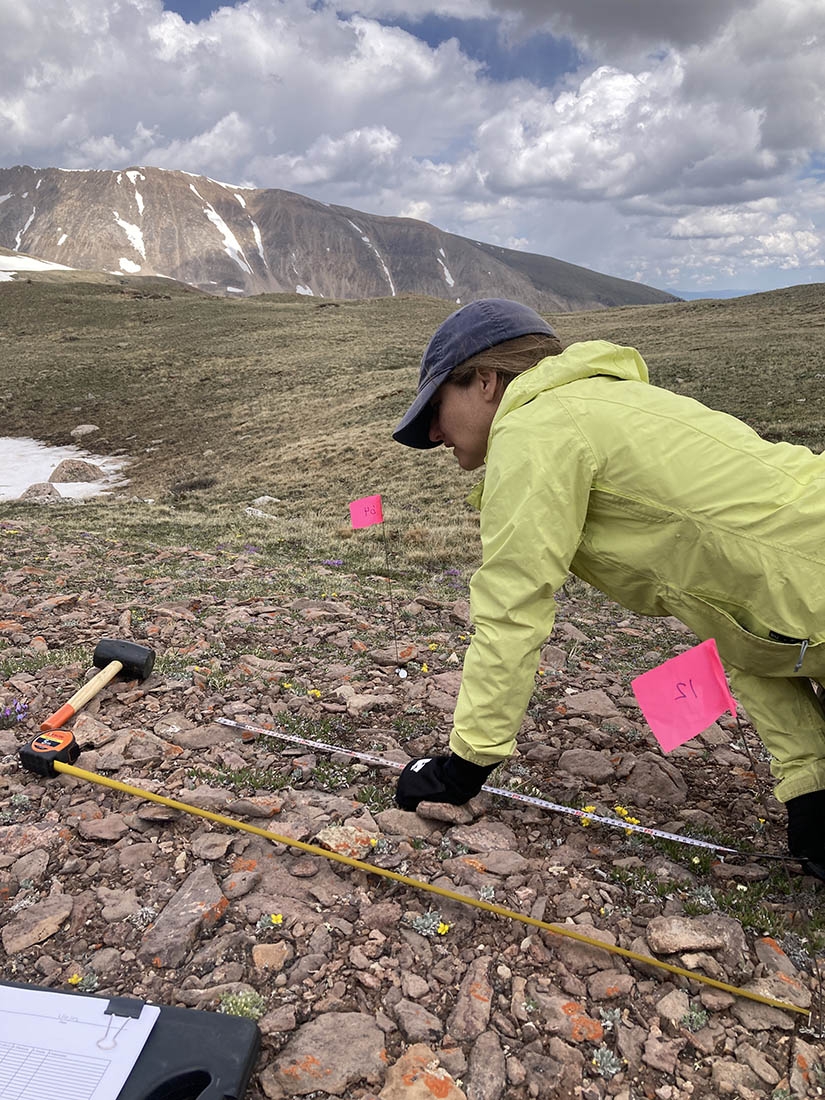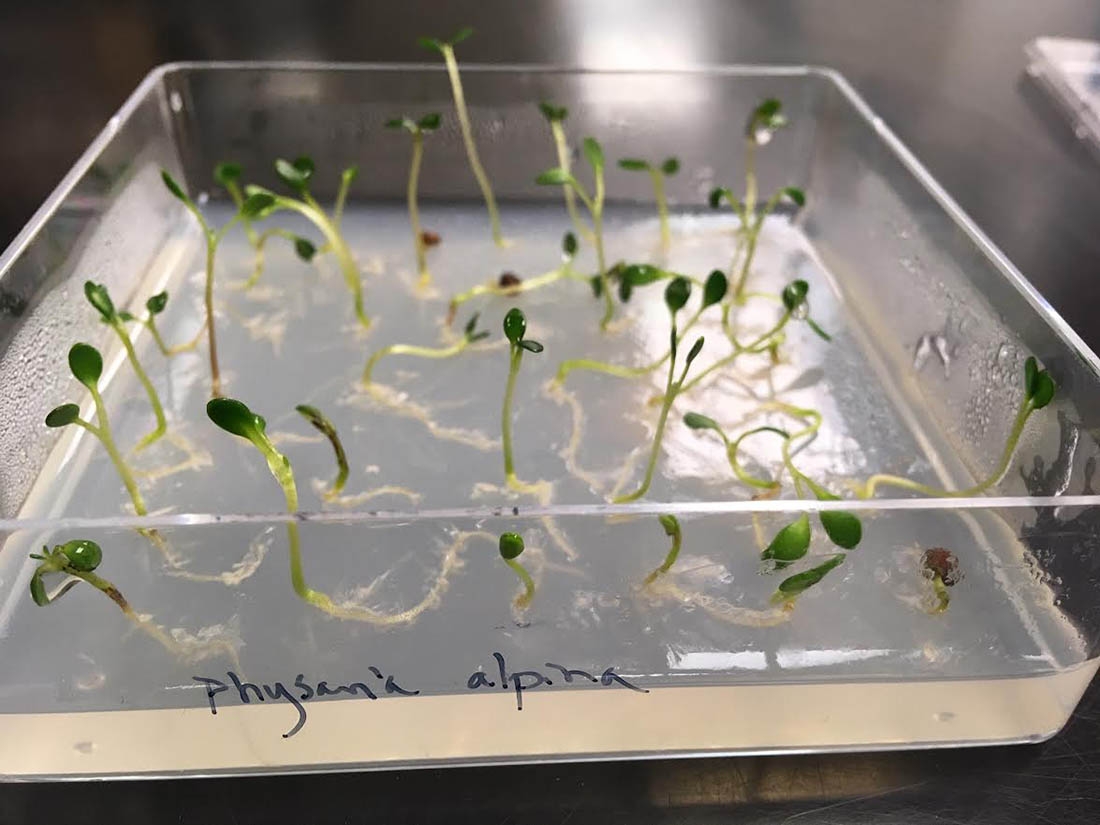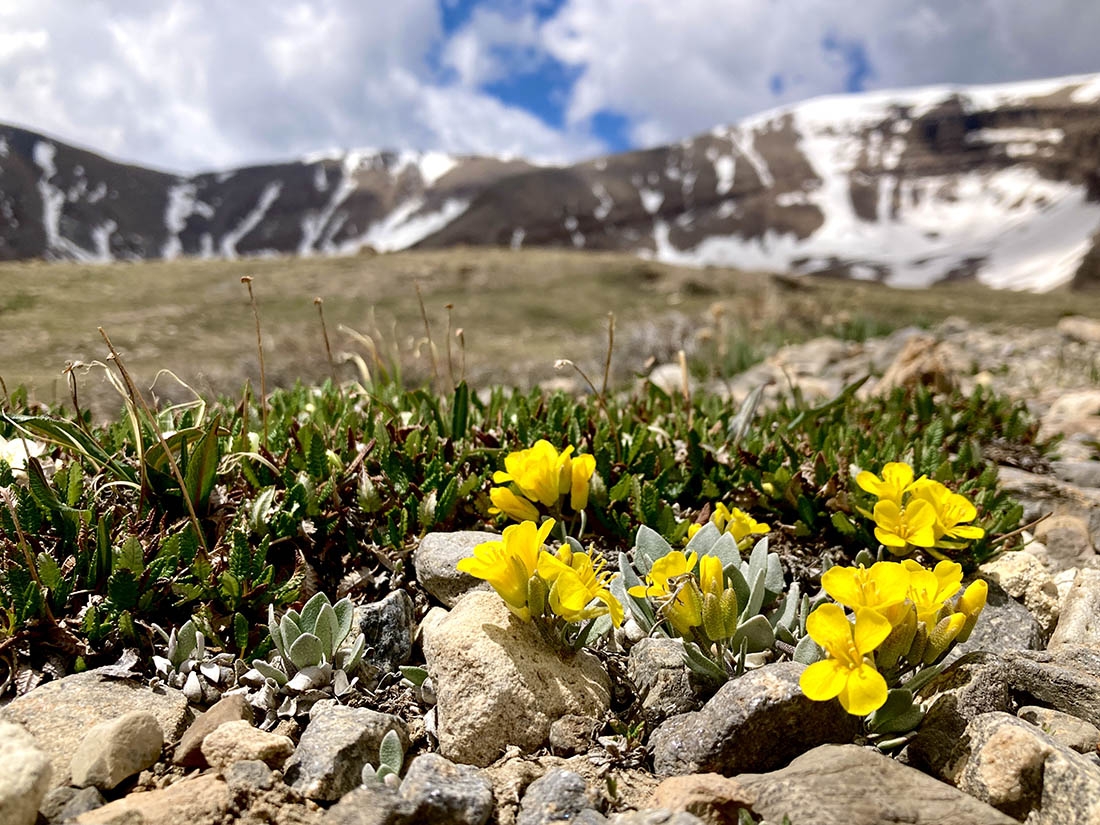The life of a conservation seed collection: A story in five chapters
Chapter 1: Birth
A young scientist – let’s call her Alex – and her enthusiastic sidekick load up a Jeep Cherokee with an herbarium press and paper bags. They are heading off to the mountains of Colorado to collect seeds from a rare, endemic (native) plant, as this is the first step in one of the primary methods of ex situ (outside of the natural habitat) conservation.
Chapter 2: Potential
The seed collection of Physaria alpina (our hero in this tale… let’s call her Phal) makes her way back to the Ecology Lab at Denver Botanic Gardens. Because of her protective layer, it is not easy to look inside of Phal and determine if her seeds are alive or dead. Having seeds that are alive is vital to a conservation collection. To test the viability (or potential for the seeds to grow) of Phal, Alex conducts germination tests. However, for Phal – and for many other rare species – little to no information exists on what is needed to germinate. So, Alex gets on her trusty steed (the computer) to research germination information for closely related species and the climate conditions of Phal’s source habitat. With this information, Alex can identify pre-treatment and temperature conditions that may be adequate for the germination of Phal.
Chapter 3: Retirement
Although Phal is quite young, she has worked hard and is ready to lounge on a beach with a margarita in hand for the next few years. Alex puts Phal in a seed bank, which is used to store seeds at -20°C for up to hundreds of years. But once again, for Phal and many other species like her, storage behavior and longevity are unknown. For this reason, germination tests of Phal are conducted throughout storage to determine when her seeds begin to decline. With this information, Phal can be utilized prior to viability decline.
Chapter 4: Renaissance
Phal has had enough of the coastal life and wants to go back to her rocky, high mountain life in landlocked Colorado. Phal’s true purpose as a safeguard against her species’ extinction is being realized – she is being used in a restoration project. But plot twist! – the mountains of Colorado have gotten much warmer since Phal went into retirement. Will she be able to germinate and survive in these new conditions? With information gleaned from germination experiments simulating climate change, scientists like Alex can better understand how Phal and other species will perform in a changing world.
Chapter 5: Realization
Phal is now growing back in her native alpine habitat and is helping to prevent her species’ decline and extinction. All life on earth depends on the biodiversity of plant life, meaning that Phal and every other individual species is significant in not only the conservation of the plant kingdom, but in the conservation of humankind.
This article was contributed by Seed Conservation Research Associate Alex Seglias.
Gallery



Add new comment